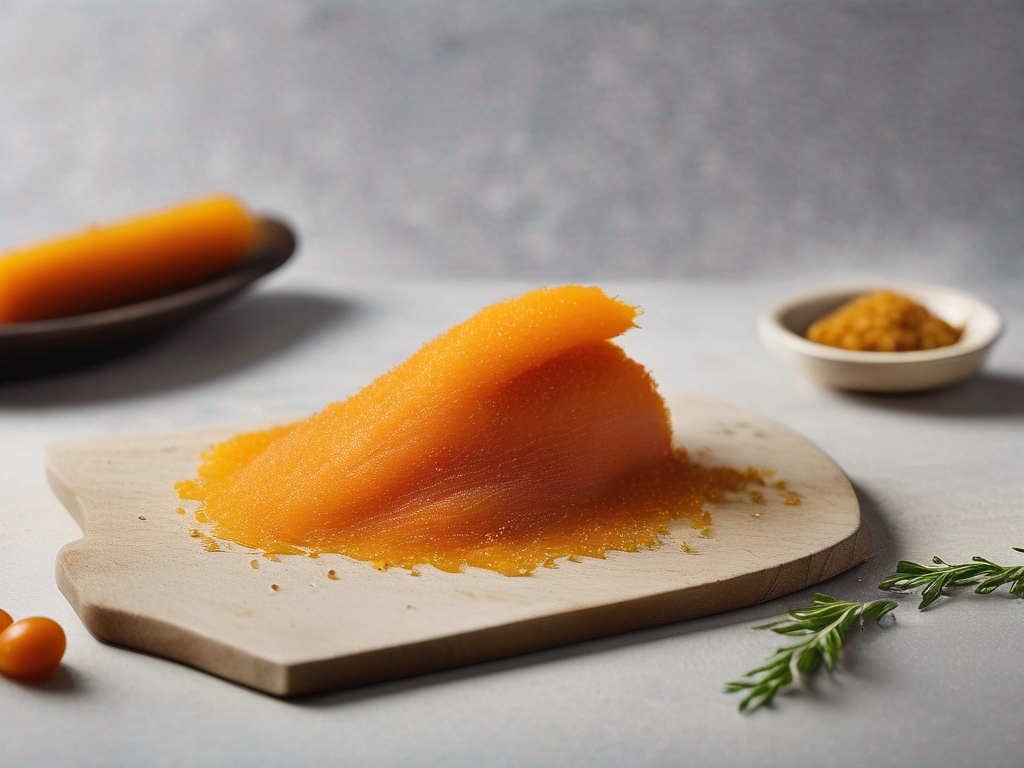
The Ultimate Guide to Preserving Bottarga Freshness in the Pantry
Get Your Free Food Safety Cheat Sheet
30 most common foods with instant answers. Print it and stick it on your fridge—completely free!
The Ultimate Guide to Preserving Bottarga Freshness in the Pantry
Bottarga, also known as "the caviar of the Mediterranean," is a delicacy made from the cured roe of grey mullet or tuna. This savory ingredient is prized for its intense umami flavor and is often used to elevate dishes with its unique taste. To truly appreciate the exquisite flavor of bottarga, it is essential to store and preserve it properly. In this ultimate guide, we will explore the best practices for preserving bottarga freshness in your pantry. (Bottarga)
Understanding Bottarga
Before delving into the preservation techniques, it is crucial to understand the characteristics of bottarga. Here are a few key points to keep in mind:
What is Bottarga?
- Bottarga is a salted, cured fish roe that has been dried and aged.
- It is commonly used in Mediterranean cuisine for its rich, briny flavor.
- The two most popular types of bottarga are made from grey mullet roe and tuna roe.
Why Preserve Bottarga?
- Proper storage helps maintain the quality and flavor of bottarga.
- Improper storage can lead to spoilage and loss of taste.
Storage Tips for Bottarga Preservation
Preserving the freshness of bottarga requires attention to detail and adherence to specific guidelines. Follow these tips to ensure your bottarga stays fresh for an extended period:
1. Store in a Cool, Dark Place
- Keep bottarga away from direct sunlight, as exposure to light can cause it to spoil.
- Opt for a cool, dark pantry or cupboard for storage.
2. Use Airtight Packaging
- Transfer the bottarga to an airtight container or vacuum-sealed bag to protect it from air and moisture.
- Ensure the packaging is securely sealed to prevent any air from entering.
3. Maintain Consistent Temperature
- Store bottarga at a consistent temperature to prevent fluctuations that can impact its quality.
- Avoid storing bottarga near heat sources or areas with high humidity.
4. Check for Signs of Spoilage
- Regularly inspect the bottarga for any signs of mold, discoloration, or unpleasant odors.
- If you notice any abnormalities, discard the bottarga immediately.
5. Rotate Stock Regularly
- To ensure freshness, rotate your bottarga stock regularly, using older pieces first.
- This practice helps prevent wastage and ensures you always have fresh bottarga on hand.
Safety Precautions for Handling Bottarga
When handling bottarga, it is essential to prioritize food safety to prevent contamination and ensure the quality of the product. Here are some safety precautions to keep in mind:
1. Wash Hands Thoroughly
- Before handling bottarga, wash your hands thoroughly with soap and water to remove any bacteria or contaminants.
2. Use Clean Utensils
- Use clean utensils and cutting boards when slicing or grating bottarga to avoid cross-contamination.
3. Refrigerate After Opening
- Once you open a package of bottarga, refrigerate any unused portion promptly to maintain its freshness.
4. Avoid Cross-Contamination
- Store bottarga away from other foods in the pantry to prevent cross-contamination.
- Use separate cutting boards and utensils for handling bottarga to avoid mixing it with other ingredients.
Conclusion
Preserving the freshness of bottarga is essential to fully enjoy its distinct flavor and elevate your culinary creations. By following the storage tips and safety precautions outlined in this ultimate guide, you can ensure that your bottarga remains flavorful and safe for consumption. Remember to store bottarga in a cool, dark place, use airtight packaging, and practice proper food handling techniques. With these guidelines in mind, you can savor the exquisite taste of bottarga in your dishes for an extended period. Learn more about bottarga here. (Bottarga)
Related Posts
Here are some other articles you might find helpful:
Authoritative Food Safety References
These agencies and university labs inform every tip and health precaution we publish.
USDA FoodKeeper – Cold Storage Guidelines
Official refrigerator, freezer, and pantry timelines maintained by the U.S. Department of Agriculture.
Visit USDA FoodKeeperFDA Produce Safety Rule & Grower Guidance
Field-to-fridge handling practices that prevent contamination of fruits, vegetables, and leafy greens.
Visit FDA Produce SafetyCDC Foodborne Illness Prevention Hub
Surveillance-backed guidance on pathogens, symptoms, and steps to reduce foodborne illness risk.
Visit CDC Food SafetyUC Davis Postharvest Technology Center
University research detailing optimal storage atmospheres for produce after harvest.
Visit UC Davis PostharvestPenn State Extension – Home Food Preservation & Safety
Peer-reviewed extension bulletins on safe canning, chilling, and reheating practices.
Visit Penn State ExtensionGet Your Free Food Safety Cheat Sheet
30 most common foods with instant answers. Print it and stick it on your fridge—completely free! Want more? Upgrade to the complete guide with 70+ foods.
Scan your food directly and get instant safety info using our AI-powered camera feature.